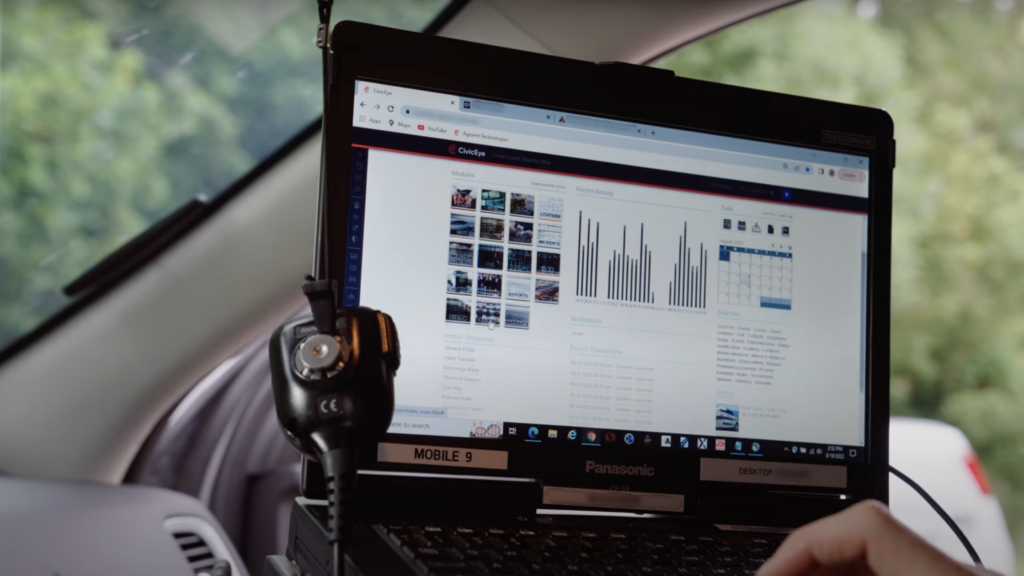
RMS Warrants: Best Practices in Creating eWarrants
Generating and managing warrants are a vital part of law enforcement agencies’ everyday work. And at the core of any successful warrant issuance lies the need for precision and reliability, ensuring that each step adheres strictly to both agency and governmental standards.
But, as law enforcement officers continue to balance existing heavy workloads and lots of administrative work (like report writing), it can be challenging to allocate additional time to other vital tasks like the creation and management of warrants.
In this blog, we’ll explore best practices that law enforcement agencies and their officers can use within their records management system (RMS) software to make the creation and management of warrants easier, faster, and more transparent, across the various types of warrants.
Let’s dive in.
The Critical Role of RMS in Warrant Creation
In today’s era of policing, RMS software has become not just another helpful tool but a central gear in the machinery of law enforcement—especially when it comes to the creation of warrants. Through the strategic use of RMS Warrants tools, departments can enhance their operational efficiency, reduce errors, and ensure that every warrant generated is both accurate and legally sound.
While some agencies still manage warrants manually (through physical files), RMS Warrants can enable law enforcement agencies to operate more efficiently through a variety of digital features.
For one, RMS software dramatically reduces the time it takes to produce and process warrants by automating many of the steps that were once manually handled. This not only speeds up operations but also significantly cuts down on human errors, which are more prevalent in paper-based systems.
Additionally, RMS technology ensures that all warrant-related data is centralized in a single platform, making it easier for officers to access and update information in real-time from any location. This connectivity enhances communication within departments and with other agencies, ensuring that everyone involved has the most current information at their fingertips. Such a system not only streamlines procedures but also enhances the security of sensitive information, since digital records are easier to protect with advanced encryption versus physical documents.
Best Practices for RMS Warrants
Now that we’ve explored the benefits of RMS Warrants and how they can support agencies by improving efficiency and saving time, let’s consider some best practices that can protect the quality and integrity of all generated warrants and some practical steps for how your agency can implement these practices.

1. Designing a Comprehensive Warrant Template
Creating a detailed and standardized warrant template in your RMS is essential for efficient and consistent warrant creation across an agency. Such templates streamline the process, ensuring every warrant meets federal and state requirements and maintains the integrity of the criminal justice process.
Tips for Effective Warrant Templates:
Start with the Basics
Include all legally required fields such as the issuer’s name, suspect details, charges, and judicial authorization.
Consult Industry Experts
Collaborate with legal advisors to ensure templates are up-to-date and compliant with both federal and state standards.
Allow Flexibility
Design templates to accommodate unique case scenarios while maintaining standardization.
2. Ensuring Data Accuracy and Verification
Accuracy and verifiability of data are foundational to the integrity of warrants. A robust RMS plays a pivotal role in ensuring that the information used in warrants is both accurate and verifiable. By leveraging the capabilities of an RMS, law enforcement agencies can significantly reduce the risk of errors that could compromise criminal justice proceedings.
Tips for Ensuring Uniformity and Compliance:
Automated Compliance
Use your RMS to automate checks for incomplete or incorrect entries, ensuring warrants meet all necessary criteria before issuance.
Regular Updates and Audits
Continuously update and audit templates to align with new laws and internal policies, ensuring ongoing relevance and effectiveness.
By implementing these practices, your agency can enhance the creation of warrants, achieving greater accuracy, legality, and efficiency, thereby upholding individual rights and law enforcement credibility.
3. Implementing Role-Based Access Controls
In the sensitive realm of criminal justice information (CJI), particularly in the creation of warrants, the importance of maintaining stringent access controls cannot be overstated. Role-based access controls within an RMS are essential for enhancing both the security and integrity of the warrant process. By defining who can view, edit, or approve warrant information based on their role, agencies can safeguard sensitive data and prevent unauthorized access.
Tips for Setting Up Role-Based Permissions in RMS:
Define Roles Clearly
Begin by categorically defining roles within your agency, such as administrators, officers, supervisors, and clerical staff. Each role should have permissions that reflect their responsibilities and needs.
Customize Access Levels
Use RMS to customize access levels for each role. For instance, officers might have the ability to create and submit warrants, supervisors might have the additional ability to review and approve them, and IT staff might only access the system for maintenance purposes without viewing sensitive data.
Regular Reviews
Regularly review and update these roles and permissions to adapt to changes within the agency or shifts in policy, ensuring that access levels always align with current operational requirements.
Implementing role-based access controls in your RMS helps ensure that each member of your agency interacts with the warrant process in a way that is appropriate to their role, thus protecting the process from internal threats and human error. This approach not only secures the data involved but also upholds the overall integrity of the warrant issuance process.
4. Utilizing Automation for Efficiency
Automation within an RMS can transform the warrant creation process, making it not only faster but also more accurate. By automating routine tasks, law enforcement agencies can minimize the manual input required, thus reducing the potential for human error and accelerating the overall process of issuing warrants.

Tips for Automation in Warrant Creation:
Identify Automatable Tasks
Start by identifying aspects of the warrant process that are repetitive and rule-based, such as data entry, form filling, and initial data checks.
Design Workflow Rules
Establish clear rules that dictate how and when data should be auto-filled, checked, and forwarded within the RMS. This includes setting up automatic alerts for incomplete or inconsistent information.
Legal Compliance
Ensure that all automated workflows are designed to adhere strictly to both state and federal guidelines. Consult with legal experts to validate that your automation processes do not bypass any legal requirements or due diligence.
By embracing automation in the warrant process, law enforcement agencies can achieve a significant improvement in both the speed and reliability of their operations, ensuring that warrants are issued promptly and with meticulous adherence to legal standards.
Takeaways: Enhancing RMS Warrants Management
In this blog, we’ve explored several best practices for optimizing the warrant creation process through RMS software. From designing comprehensive warrant templates and ensuring data accuracy to implementing role-based access controls and utilizing automation, these strategies are crucial for enhancing efficiency, accuracy, and legal compliance in warrant management.
Looking ahead, the future of RMS technologies holds promising advancements that could further refine these processes. As RMS systems continue to evolve, integrating more sophisticated data analytics, interconnected security features, and more, law enforcement agencies can be better equipped to handle the complexities of modern policing with even greater precision and ethical accountability.
To learn more about how your agency can leverage RMS technology to improve how your agency generates and manages various warrant types with CivicRMS, click below.
GET IN TOUCH
To learn more about CivicRMS and schedule a demo, click here.
STAY IN THE LOOP
Follow CivicEye on LinkedIn – Facebook – Instagram – Twitter – YouTube.

